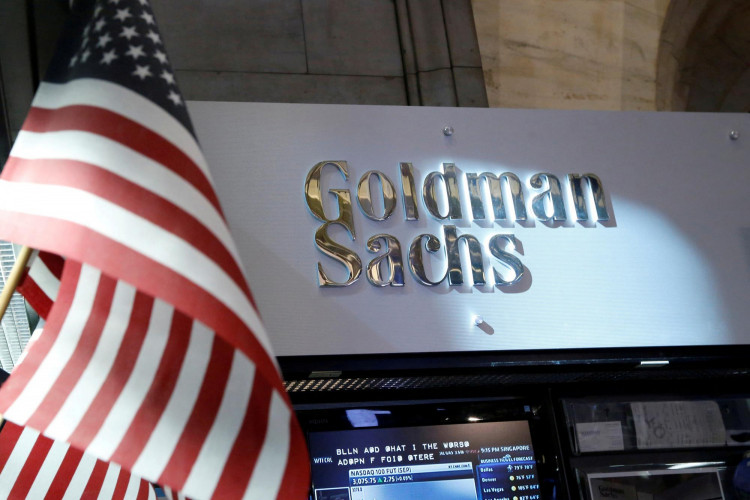Goldman Sachs raised the probability of a U.S. recession to 35% over the next 12 months, citing escalating trade tensions and renewed inflationary pressure as President Donald Trump's tariff policy rattles global markets and investor confidence.
In a report released Sunday evening, the Wall Street bank sharply revised its macroeconomic outlook, trimming its 2025 GDP growth forecast for the United States to 1% from 1.5% and projecting a year-end unemployment rate of 4.5%, 0.3 percentage points higher than its prior estimate.
The new projections represent Goldman's most pessimistic view of recession risk since the regional banking crisis in 2023. The "sharp recent deterioration in household and business confidence, and statements from White House officials indicating greater willingness to tolerate near-term economic weakness in pursuit of these policies," were cited as the primary drivers, the bank's economists wrote.
Trump told reporters aboard Air Force One Sunday that reciprocal tariffs would be imposed on all countries, contradicting earlier speculation that the measures would target a narrower group of trading partners. "You'd start with all countries, so let's see what happens," Trump said. "I haven't heard a rumor about 15 countries, 10 or 15."
Goldman responded by adjusting its base case assumption on tariff levels, now expecting average U.S. tariff rates to rise 15 percentage points in 2025, up from 10 points previously. The firm projects reciprocal tariffs averaging 15% across all U.S. trading partners, which after accounting for country and product exclusions, results in a net effective tariff impact of 9 percentage points.
Goldman economists warned that "higher tariffs are likely to boost consumer crisis," placing additional strain on real incomes. As a result, the bank increased its year-end core inflation estimate to 3.5% from 3%, a move that could complicate the Federal Reserve's ability to ease monetary policy.
The firm now anticipates the Fed will cut interest rates three times this year-beginning in July and continuing in September and November-compared with its earlier forecast of two cuts in June and December. A similar trajectory is expected for the European Central Bank, which Goldman sees implementing cuts in April, June, and a newly forecast July easing.
Goldman also slashed its year-end S&P 500 target to 5,700 from 6,200, the lowest among major Wall Street firms. The revision follows a volatile week in equities, driven by uncertainty over trade policy and inflation. Shares of companies with global exposure and manufacturing-intensive business models have been particularly sensitive to the tariff news.
Europe may fare worse under the tariff regime. Goldman forecast that reciprocal measures from Trump-particularly a 15-point tariff on the European Union-could raise effective EU tariff rates by 20 points. The resulting economic drag could push the euro area into a "technical" recession, with second, third, and fourth quarter 2025 growth forecasts at 0.1%, 0.0%, and 0.2% respectively.
Goldman estimates the new tariff assumptions will shave 0.7% off eurozone GDP by end-2026 compared to a no-tariff scenario. In a downside case, the economic hit could reach 1.2%, prompting deeper recession risks and more aggressive ECB easing.






